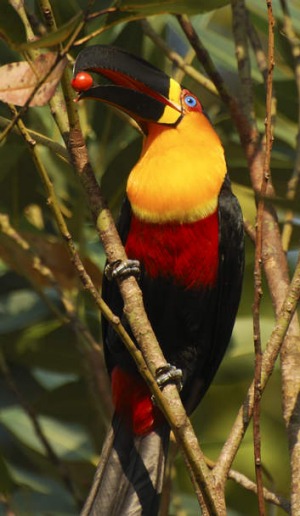
Spring has almost sprung in the northern hemisphere, writes Brian Johnston.
Springtime in the northern hemisphere puts a jaunt in your step and a smile on your face. You feel the first warm fingers of sunshine on your cheeks. Green buds unfurl on trees, and the glorious shooting of drab bulbs produces a fanfare of bold blooms.
Botanic gardens are often at their best in springtime, and reveal not just a beauty of blossoms, but national tastes and cultural aspirations, too. They're just the place to relax with locals as they picnic, pose for wedding photos and sniff the new season. Here are 10 of the world's best springtime treats - including a couple, too good to ignore, that we've snuck in from more southern climes.
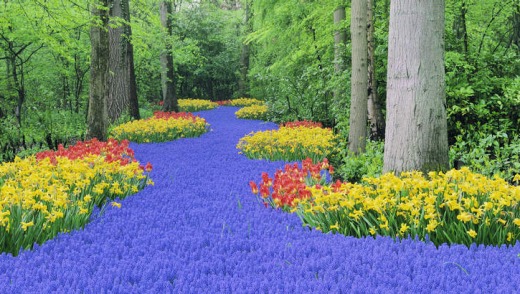
KEUKENHOF, LISSE, NETHERLANDS
Although tulips are native to central Asia and were first grown in Persia and the Ottoman Empire, no country has been more obsessed with these turban-shaped blooms than the Netherlands.
Like the Dutch, tulips are plump, modest and orderly, yet their shockingly lurid colours demonstrate a startling, rebellious streak. This simply named "kitchen garden" is a showcase for national growers, who provide seven million bulbs to create the world's largest floral display. Purple crocus and hyacinths emerge first, narcissi and jaunty daffodils add a trumpet fanfare, then a superb symphony of tulips explodes in clumped masses.
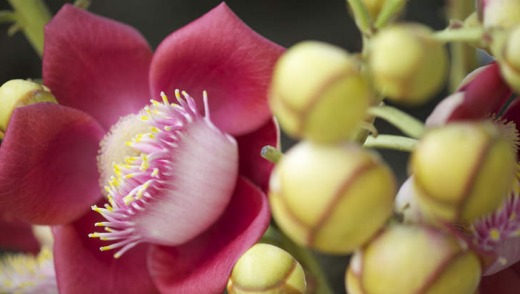
This year, the garden takes Holland itself as its theme - exhibits will trace the history of the tulip and its impact on 16th-century Dutch society.
A self-guided €5 audio tour of Keukenhof provides a good introduction, but leave time to meander through woodland and across lawns popping with colour before heading to the pavilions to admire rare and newly created tulip varieties.
Visitors can take flower arrangement and photography workshops, or sit pasha-like in a cafe, dizzy with the scent of blooms.
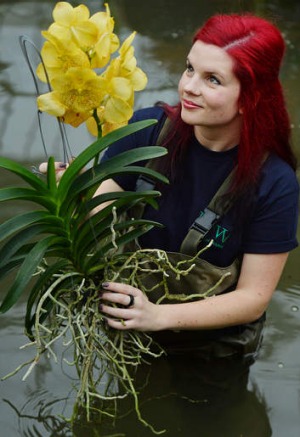
See keukenhof.nl.
ROYAL BOTANIC GARDENS, LONDON, UK
"Kew Gardens" has been at the forefront of botanical research since 1759, and boasts the planet's largest collection of living plants, plus a vast library of botanical drawings and books. Joseph Banks brought his Australian samples here, and the gardens capture a delightful Victorian atmosphere of scientific earnestness and derring-do colonial adventure. Never has science looked so beautiful.
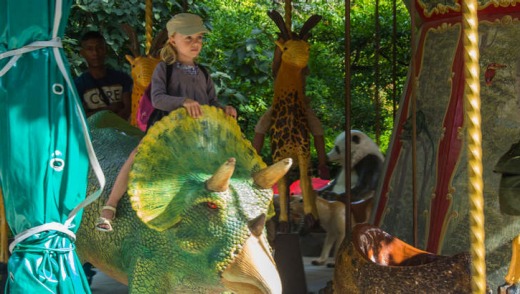
The enormous gardens have wandering walkways that lead past a pretty palette of spring blooms, from crocus and daffodils along the Princess Walk to hyacinths and narcissi on the parterres fronting the Palm House.
Woodlands are sprinkled with bluebells and snowdrops, and the Rhododendron Walk is wanton with pink blossoms. A treetop walkway winds 18 metres above a woodland flaunting newly minted spring colours.
At any time of year, huge 19th-century hothouses explode with exotic blooms and collections of palm trees and ferns; you expect to encounter ladies in crinolines lurking among the orchids. Don't miss the charming Marianne North Gallery, which features 832 paintings of exotic flora by an intrepid Victorian traveller.
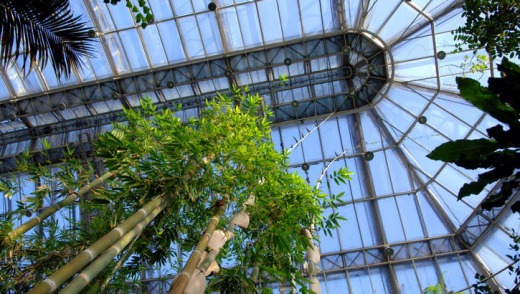
See kew.org.
JARDIN DES PLANTES, PARIS, FRANCE
Founded in 1626 by a physician to King Louis XIII as a garden for medicinal herbs and open to the public for nearly 400 years, this is France's largest botanic garden.

Where Kew Gardens reflects the Victorian desire to label the world, the Jardin des Plantes harks back to an earlier era of wonders and curiosities.
Its delightful historical legacy includes an 18th-century maze and small zoo, founded with animals from the royal menagerie at Versailles.
Clipped French formality is found in carefully planted parterres and the curtain-pruned plane trees that create stately avenues where gravel crunches underfoot.

Especially notable are the Art Deco Winter Garden and Mexican Hothouse but, with the arrival of spring, flowerbeds burst with new colour and the superb Alpine Garden produces delicate but delightful blossoms. The Jardin des Plantes is very child-friendly, with climbable sculptures near the entrance, ice-cream stands, and an old-fashioned carousel that features extinct animals.
Even adults might be tempted to ride a dodo in the fresh sunshine, surrounded by a swirl of flowering borders - Paris in the springtime with a giggle.
See mnhn.fr.
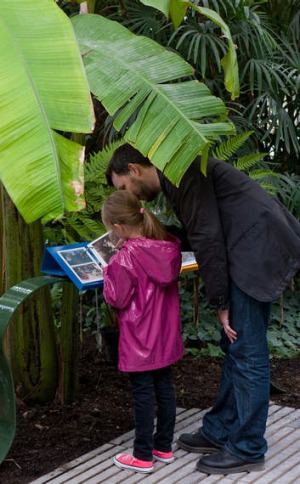
BOTANISCHER GARTEN, BERLIN, GERMANY
One of the world's most prominent botanic gardens, begun more than 300 years ago as a royal herb garden and now owned by the Free University of Berlin, is a model of Germanic rectitude and organisation.
Sixteen glasshouses house a variety of labelled, exotic species such as orchids, carnivorous plants, cacti and water lilies.
The Great Pavilion, one of the world's largest glasshouses and a soaring example of 19th-century steel-and-glass architecture, features a collection of towering bamboos.
Only marshlands and areas of native wild plants seem untamed.
Meadows are lush with grasses and wildflowers, where earnest students lie reading books, and lovers canoodle.
The best spring displays are to be found around the cluster of main buildings, where perennial borders are a palette of improbable colour.
Rather curiously, the Botanischer Garten contains a cemetery where its founding botanists lie - just the place, perhaps, for some Goethe-inspired contemplation on life's Sturm und Drang.
Inside the Botanical Museum - the only museum in Europe purely devoted to botany - you can also study plants associated with ancient Egyptian tombs if you wish to further indulge in unseasonal Germanic sorrow. See bgbm.org.
KIRSTENBOSCH NATIONAL BOTANICAL GARDEN, CAPE TOWN, SOUTH AFRICA
Kirstenbosch is an outstanding botanic garden in a region internationally noted as one of the richest in plant diversity anywhere.
Nearly all its plants are indigenous. Admire the original South African pelargoniums that gave rise to modern geraniums, as well as giant cyclads, pure-yellow birds of paradise and proteas, South Africa's national flower.
There's also an almond hedge planted in 1660 by the first Dutch governor, and giant camphor trees planted in 1898 by British magnate Cecil Rhodes, who once owned this estate.
The setting is spectacular, with the gardens sitting under the flank of Table Mountain.
Lawns, dotted with eucalyptus and shivering silver trees, make the perfect place for a scenic picnic.
In April here it will be autumnal plants on show - great purple and pink splashes of spurflowers, red nerines dusted with gold, and many types of protea.
If you return in the South African spring, bronze and orange carpets of Namaqualand daisies, blue flax, alarmingly pink vygies erupt. Spring bulbs such as watsonias and arum lilies also appear - providing they haven't been eaten by porcupines.
See sanbi.org.za.
MONTREAL BOTANICAL GARDEN, MONTREAL, CANADA
Denuded and snowbound until early April, you could visit these gardens during half the year and barely venture outside - greenhouses display various plants, from African violets to vivid red begonias and flamboyant orchids, while an excellent insectarium showcases 190 species of creepy-crawlies.
The kids will love goggling at stick insects, hairy-legged spiders and beetles gleaming like opals.
When the Canadian spring finally kicks in, however, venture forth just like the squirrels. A notable crab-apple collection puts on a show in delicate red-rimmed pink, and in May, 400 lilacs provide a profusion of purple and white.
The Japanese Garden features springtime cherry blossoms, bonsai and performances of tea ceremonies, and the rustic Dream Lake Garden recreates a Ming Dynasty landscape of ponds and pavilions, where you can admire the plum blossoms and the sound of wind through rustling bamboo. A superb collection of penjing (bonsai) is a gnarly delight.
Rather more unusual is the First Nations Garden, which features native plants such as tobacco, corn, sunflowers and beans, as well as birch and maple trees that, however, look best in autumn.
See ville.montreal.qc.ca/jardin.
BUTCHART GARDENS, VICTORIA, CANADA
Butchart Gardens, 20 kilometres from Victoria on Vancouver Island, is a resolutely commercial show garden rather than botanic garden, but don't let that put you off - you could hardly find a better place for spring displays.
The gardens were opened in 1904 on the site of an old limestone quarry by the wife of a cement magnate, and the sunken garden is still the highlight - you can look down from viewpoints onto a riot of insolent colour from tulips and daffodils.
Rose and Italianate gardens have since been added; unusual Himalayan blue poppies nod in springtime in the Japanese Garden, though, more notably, maples put on a fiery display in autumn.
Beyond, a quack-loud ornamental duck pond is surrounded by spring bulbs. The gardens cover 20 hectares, with 700 varieties of plant and some million flowers.
The kaleidoscopic show is magnificent and gardeners will be inspired - or perhaps crestfallen - at the sheer perfection of Butchart. Not a leaf seems out of place, lawns are groomed to carpet-like perfection, and every bloom is flawless.
See butchartgardens.com.
CHANTICLEER GARDEN, PENNSYLVANIA, USA
Surely one of the world's most romantic public gardens is found in Wayne, some 30 minutes from downtown Philadelphia.
It started life in the early 20th century as the summer retreat of a pharmaceuticals baron, and was opened to the public in 1993.
Though not technically a botanic garden, it has significant plant variety (some 5000 species), showcases a number of different garden styles, and undertakes an educational role. Nowhere else are staff so eager to answer gardening questions.
The garden is closed over the winter, and spring is the best time to visit. Flowering cherries embrace the house in a semi-circle of pink, and the Gravel Garden is spotted with columbines, tulips and miniature daffodils.
Extensive woodlands emerge in a shimmer of delicate blooms such as azaleas, primulas and Jack-in-the-pulpits. Rolling lawns pop with blue quamash flowers, Spanish bluebells and two rivers of 80,000 narcissi.
Still, what's best about Chanticleer Garden isn't its brash displays of colour, but rather its forms, textures, use of stone and wood, and wonderful layers of soothing green on green.
See chanticleergarden.org.
BROOKLYN BOTANIC GARDEN, NEW YORK, US
New York Botanical Garden may seem the more obvious choice, but head to Brooklyn for America's most-visited botanic gardens.
It's a springtime treat, starting early at Magnolia Plaza - delicate white flowers of star magnolia in March, followed by ivory and pink waxen beauties in April.
Bluebells erupt in the woods, and the Cherry Esplanade, with its row of double-flowering cherry trees, is as lurid as the cover of a Barbara Cartland novel. By the end of April, the Lilac Collection is a fragrant interlude in violet and magenta.
The Japanese Hill-and-Pond Garden is at its finest in mid-April, and the centrepiece of a two-day cherry-blossom festival. Dotted with stone lanterns and graced with a viewing pavilion, it blushes with cherry trees and azaleas. Turtles swim in the ponds.
Be sure to visit the C.V. Starr Bonsai Museum, which houses one of the world's oldest and largest bonsai collections, planted in ceramic pots and displayed at eye height. These living sculptures are intended to provoke quiet contemplation. Pine and cypress trees are symbols of longevity and strength, while spring-flowering plum represents vitality and peach immortality.
See bbg.org.
JARDIM BOTANICO, RIO DE JANEIRO, BRAZIL
Some of the world's best botanic gardens lie in the tropics and lack clearly defined spring-times. If you like your seasons hot and humid, however, this botanic garden obliges.
Wedged between rainforest-draped hills and a coastal lagoon just back from the posh seaside suburb of Ipanema, the Jardim Botanico is quintessentially Brazilian - a lush, sexy place where European formality is attempted, but overwhelmed by tropical abandon in a passionate embrace of lianas, fruit-splattered footpaths, and shaded groves where monkeys bicker.
The gardens were founded in 1808 by Brazil's prince regent.
While you won't find the spring flowers of the northern hemisphere, there's plenty to delight - the signature alley of royal palms, wonderful ponds afloat in water lilies of Alice in Wonderland proportions, and hundred of species of orchids and bromeliads. Well-heeled locals come here on weekends to amble, eat and celebrate kids' birthdays. Weekdays are serene.
The garden adjoins a national park and has notable birdlife, which more than makes up for the relative absence of flowery colour. You might spot toucans, stunning seven-coloured tanagers, yellow-eared woodpeckers and maroon-bellied parakeets.
See jbrj.gov.br.